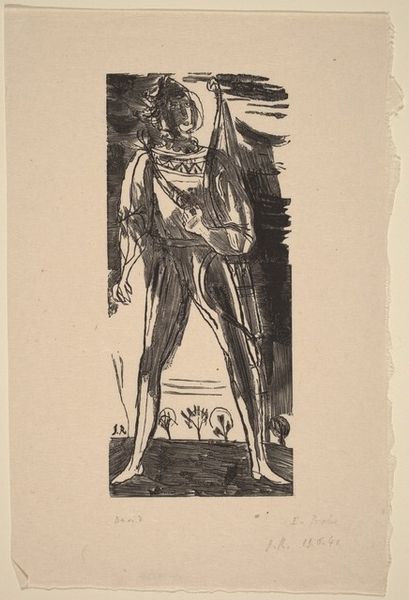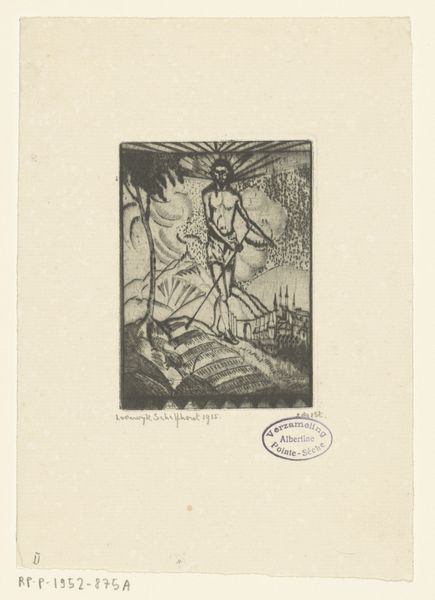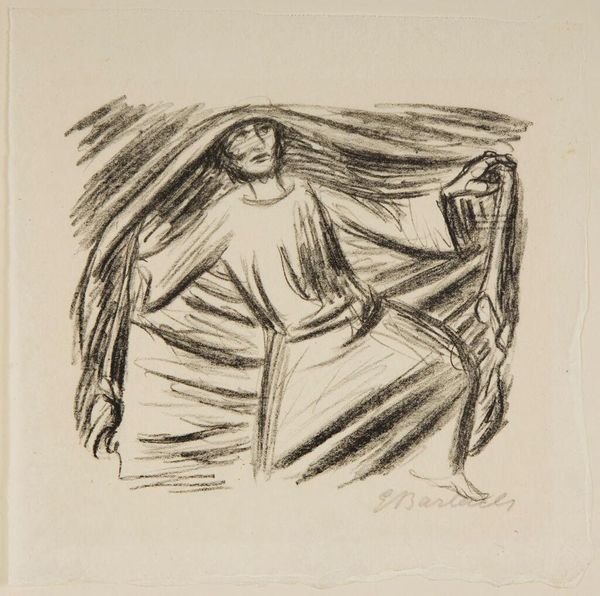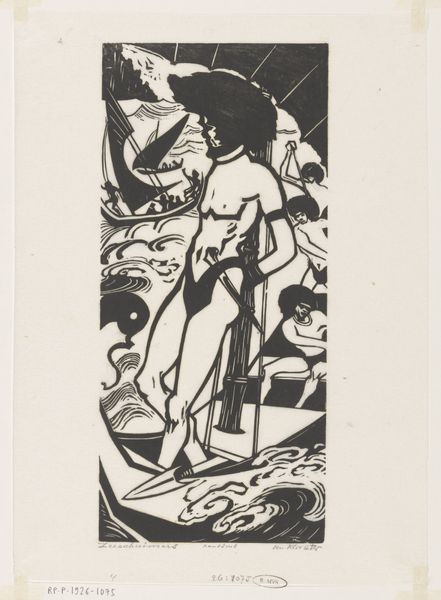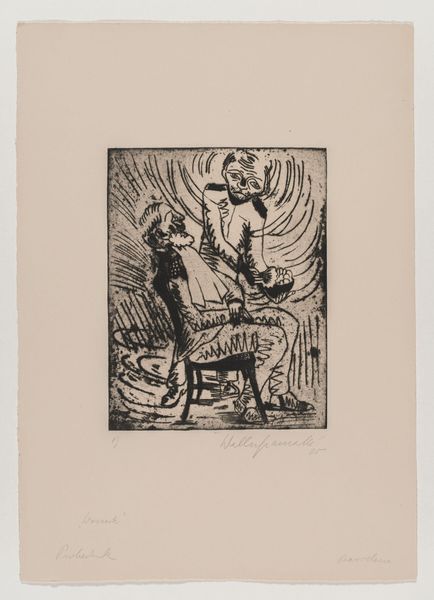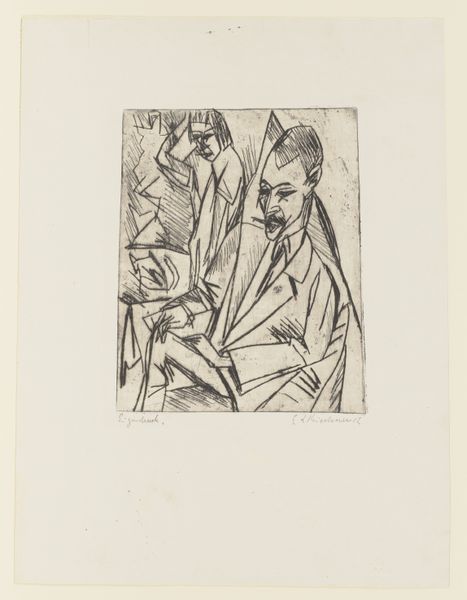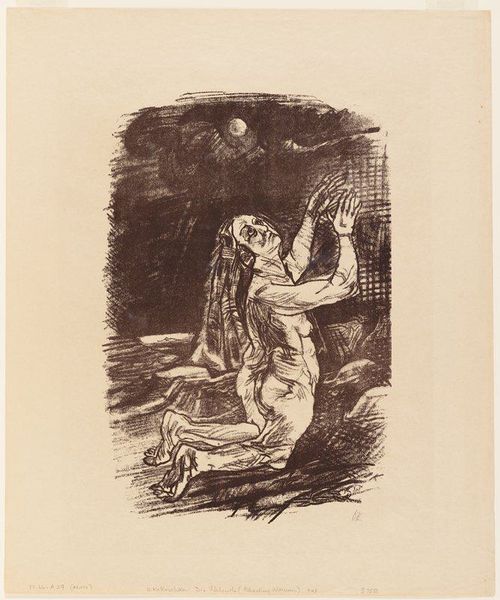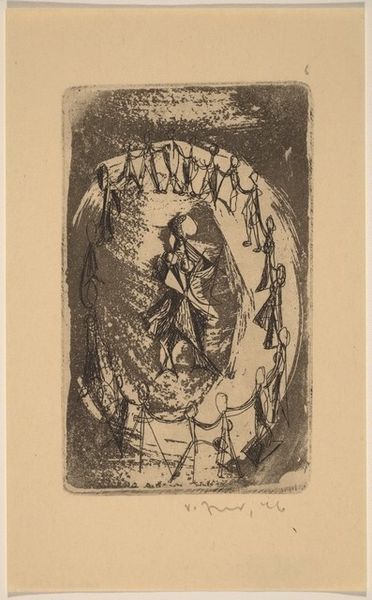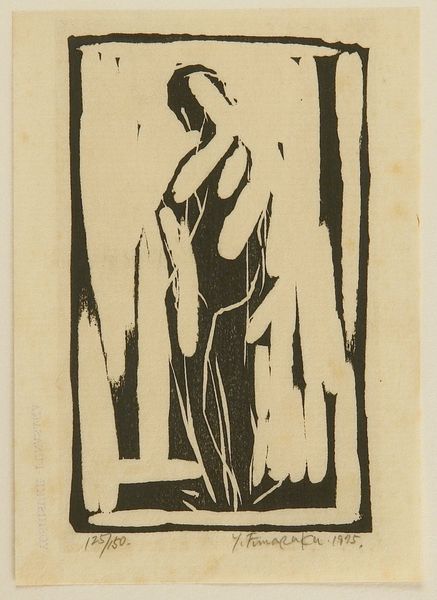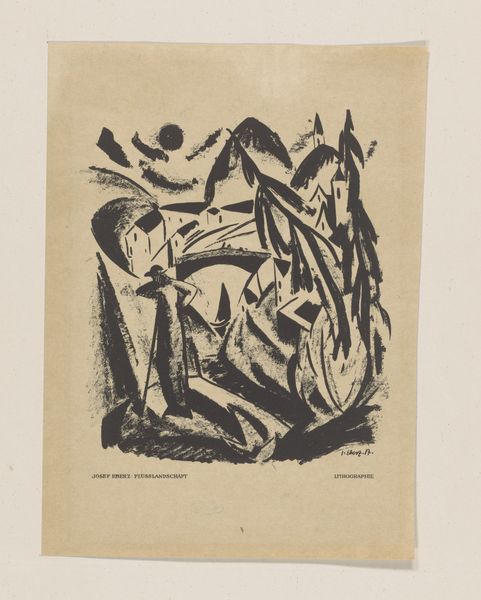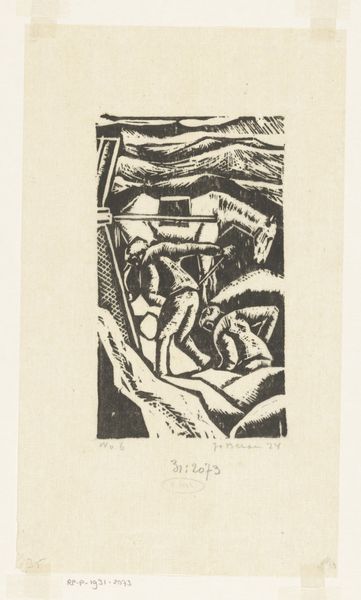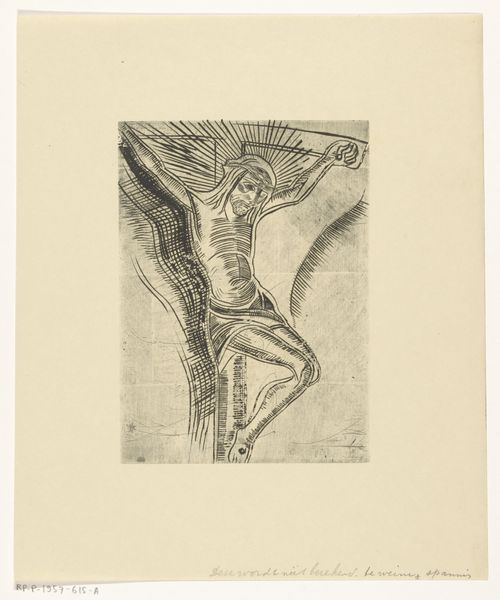
Dimensions: 13 7/8 x 5 15/16 in. (35.24 x 15.08 cm) (image)
Copyright: No Copyright - United States
Editor: Here we have Emile Bernard’s "La Crucifixion," a woodcut print dating from around 1890 to 1894. It’s striking – the stark black lines against the light paper create a really dramatic effect, almost oppressive. How do you interpret this work? Curator: This print exists within a fascinating intersection of faith, art, and social commentary. Considering Bernard's later involvement with religious artistic communities, the raw, almost brutal lines of the woodcut seem to reflect a grappling with traditional narratives of suffering and redemption. Think about the Symbolist movement occurring then – a move toward conveying emotion and experience, challenging academic constraints, engaging spiritual and psychological topics. This crucifixion isn’t just a biblical scene, but an expression of something deeper. Editor: It definitely feels less about glorifying and more about portraying suffering, like the pain and struggle are the point. Curator: Precisely. And consider the medium – woodcut – often associated with folk art and religious imagery accessible to a wider audience. What do you think the artist's intent might have been in choosing that, instead of something maybe perceived as more high art? Editor: Perhaps he wanted to bring a message to the masses, a kind of social commentary on the disparities between the teachings of Christ and the realities of society? The common person's art for a common-person focused gospel. Curator: Exactly! And think about the implications: who is truly crucified, both literally and figuratively? Bernard's "Crucifixion" invites us to critically engage with faith and its place within the sociopolitical landscape of its time and of ours. Editor: I never thought about it like that before – it’s so much more than just a religious scene. Curator: It really is a powerful and multifaceted work. Art provides us the platform to challenge accepted traditions, prompting critical dialogues. Editor: I'm walking away with an all new view. Thank you!
Comments
minneapolisinstituteofart almost 2 years ago
⋮
Although produced in the spirit of a medieval woodcut, Émile Bernard's print is deceptively original. He achieved a primitive look by carving the coarse, unruly side-grain of a wood plank rather than the smoother end-grain, unheard of for a 19th-century artist. The narrow format borrows from Japanese hashira-e prints, which hung on pillars. And his angular, elongated Christ seems to prefigure German Expressionism. Using ropes on the cross was also novel; artists had switched to nails in the Middle Ages because they produced more blood.
Join the conversation
Join millions of artists and users on Artera today and experience the ultimate creative platform.
